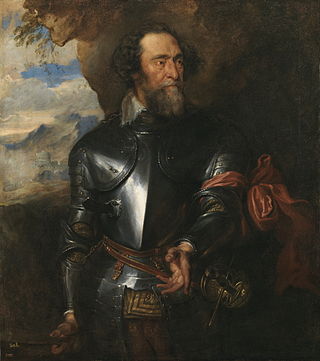Known victims
1546 - Ottilia Pöttin burned to death
1546 - Agatha Seyfried burned to death
1546 - Walburga Posenberger burned to death
1546 - Walburga Zimmermann aus Rottenburg (Also known as Rottenburg am Neckar) burned to death
1547 - Anna Hermanns burned to death
1554 - Margaretha Weißbrot von Schemberg burned to death
1561 - Catharina Höhnmeyer burned to death
1561 - Margaretha Parnayer burned to death
1561 - Barbara Rebin von der Neuenburg burned to death
1566 - Elsa Rainherin aus Straßberg burned to death
1566 - Wilhelm Zorn aus Schwäbisch Gmünd beaten and burned to death
1569 - Margaretha Höhn burned to death
1569 - Anna Quatlender von Weiler burned to death
1571 - Catharina Strobenhauser aus Horb burned
1572 - Ursula aus der Wentin burned to death
1572 Margaretha Reiderken burned to death
1572 Barbara Vogler burned to death
1572 Hans Kilian aus Pfullingen burned to death
1572 Margaretha Stimler aus Waldmössingen burned to death
1572 Petronellea Rein aus Trailfingen burned to death
1573 Anna Kermann Witwe von Hans Bilgen burned to death
1573 Waldpurga Dilgass genannt Faulhaberin burned to death
1574 Margaretha Burg aus Binzwangen burned to death
1574 Hans Baugen aus der Altstadt burned to death
1574 Barbara Heinzmann burned to death
1574 Margaretha Hochburger aus Ravensburg burned to death
1574 Apollonia Winding von Sunderfingen burned to death
1574 Barbara Egloff killed by unknown means
1575 Margaretha Brig von Hangen burned to death
1576 Ursula Rößler burned to death
1577 Rosina Gräf burned to death
1579 Barbara Nieth von Blattenhardt vor Hinrichtung branded and burned to death
1580 Barbara Strom von Trossingen burned to death
1580 Hans Engel gerädert dann burned to death
1580 Michel Reitz von Ratshausen burned to death
1581 Waldburga Heinzelmann von Schramberg burned to death
1582 Paul Benz von Westhofen burned to death
1582 Hans Dorn von Hasenweiler gerädert dann burned to death
1582 Hans Heinrich Hessen von Lützelburg beaten then burned to death
1583 Anna Möslin burned to death
1583 Cordula Müller burned to death
1583 Margaretha Rötlin burned to death
1584 Ulrich Loschner von Metzingen burned to death
1584 Michael Frieß ein Schmied burned to death
1584 Hans Jacobs von Molspern burned to death
1585 Apollonia Klug aus dem Blatterhaus burned to death
1585 Margaretha Breller burned to death
1586 Anna Werlin burned to death
1586 Apollonia Marstall burned to death
1586 deren Mann Hans Schürlin burned to death
1586 Hans Reinhardt von Geißlingen bei Ulm burned to death
1586 Matthias Kugel von Brienbach burned to death
1587 Angesa Decker von Meßstetten burned to death
1587 Anna Funck aus Erla unter Rosenfeld burned to death
1587 Agnes Rosenberger burned to death
1588 Anna Menin aus der Altstadt burned to death
1588 Katharina Ruopp von Tailfingen burned to death
1588 Margaretha Baurmännin von Schwenninge burned to death
1588 Anna Scherlin burned to death
1588 Agneta Petermann drowned
1588 Daughter of Agneta Petermann drowned
1588 Katharina Gender burned to death
1589 Anna Kurt von Zeidlfingen burned to death
1590 Salomea Herder burned to death
1590 Conrad Haller burned to death
1590 Barbara Zeller burned to death
1590 Paula Biler von Pforra bei Eschingen burned to death
1590 Thongius Schentzlin von Schwenningen burned to death
1591 Hans Bosch von Wernsreute bei Ravensburg burned to death
1591 Anna Vischer burned to death
1591 Catharina Ackerknecht burned to death
1592 Anna Schuler Witwe Folter dann Haft
1592 Conrad Ernst von Reutlingen burned to death
1592 Anna Probst burned to death
1592 Brigitta Pöttlin burned to death
1592 Martin Brienen burned to death
1592 Verena Hundspissin von Tuttlingen burned to death
1592 Ursula Häsin von Täbingen burned to death
1592 Anna Stieling aus der Altstadt burned to death
1593 Tobias Wirt aus Steißlingen beaten then burned to death
1593 Martin Fritz aus Kemnat beaten then burned to death
1593 Hans Schlieffer von Frittlingen beaten then burned to death
1593 Heinrich Fausten aus dem Breisgau beaten then burned to death
1593 Georg Finckhels aus dem Gunthartz beaten then burned to death
1593 Hans Schmidt burned to death
1593 Margaretha Waldkaff von Sigmaringen dem Dorf burned to death
1595 Georg Jank von Mörspurg beaten then burned to death
1595 Hans Wilden von Tüwingen beaten then burned to death
1595 Anna Burdig von Tuningen burned to death
1595 Barbara Pack von Bretingen burned to death
1595 Margaretha Piekherna von Schleickhen burned to death
1595 Jacob Striegel der Alte burned to death
1595 Anna Wernitz burned to death [2]








